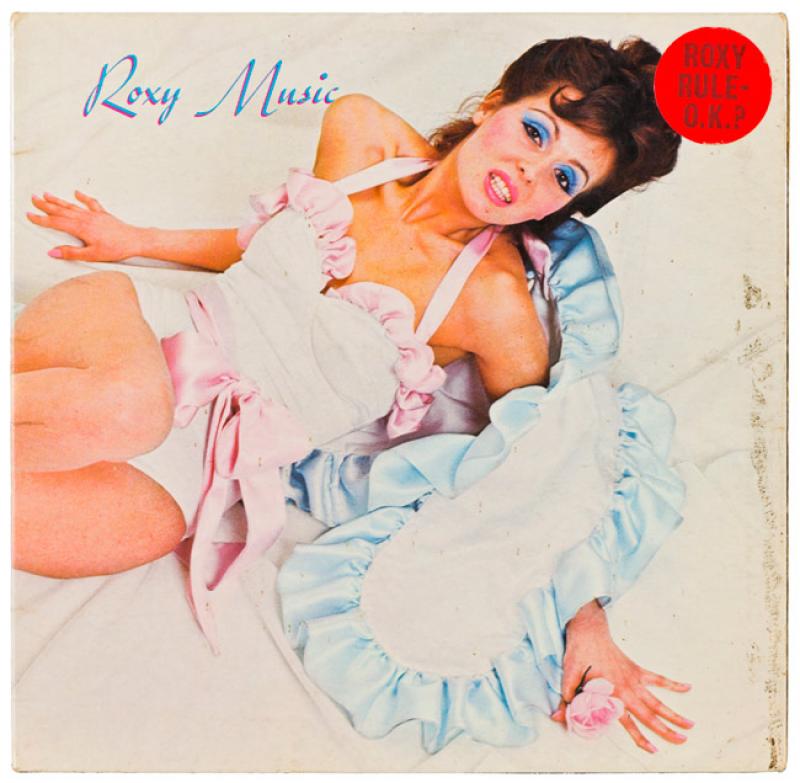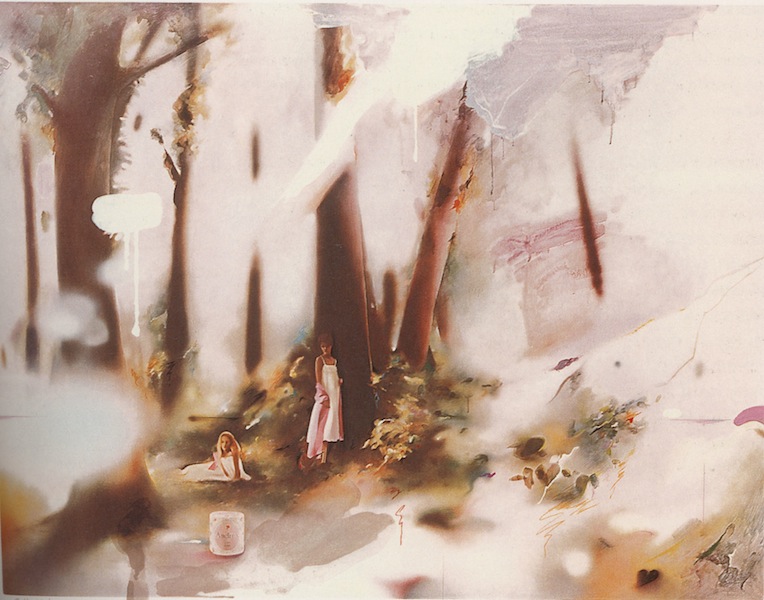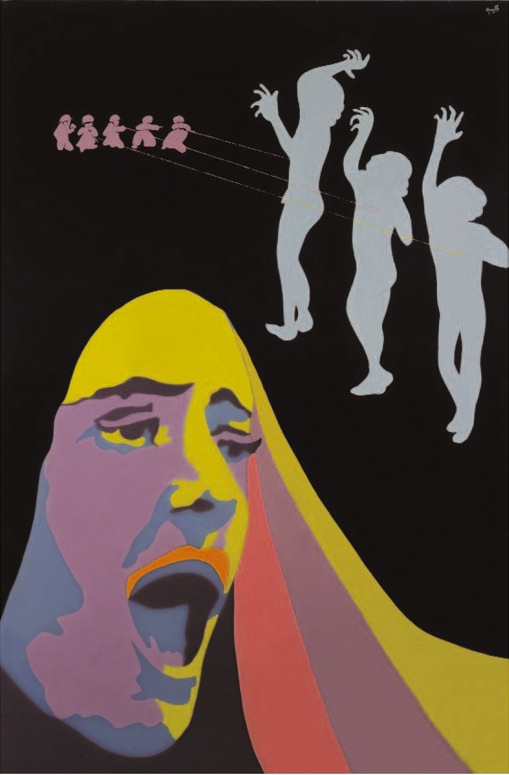Glam! The Performance of Style, Tate Liverpool | reviews, news & interviews
Glam! The Performance of Style, Tate Liverpool
Glam! The Performance of Style, Tate Liverpool
This exhibition may feel random and tangential, but it's still enormous fun

Glam. Were you there? If so, what was it all about? You might come up with a list: Roxy Music, Ziggy Stardust, shiny flares, Sweet, shaggy hair, the ubiquitous platform boot, T-Rex, glittery eye-shadow, lip-gloss pouts (on men). It was the era of dressing up and gender-bending as fashion statement, though it’s also true that the glamour in Glam Rock was more glitter paste than gold.
Indeed, it’s rather more fun than it sounds, especially the first half which concentrates on the ephemera of Glam Rock: the album covers, the T-shirts, the posters, the teen magazine covers (Oh Boy, My Guy, Jackie), the odd Brian Eno costume. It’s a winning nostalgia trip for those who were there and a slice of pop cultural history for those who weren’t.
There are some outstanding individual works that somehow make up for the randomness
But it’s an exhibition in two parts, and the second half is uneven. After you cross the threshold of Marc Camille Chaimowicz’s installation Celebration?, which resembles the detritus of a Seventies disco at which you suspect there was more posing then fun, you enter a largely New York art scene that includes Warhol and Cindy Sherman.
Warhol’s elegant drawings of shoes are from the Fifties when he worked as New York's highest paid adman, while a selection of his Superstar “screen tests”, including footage of Lou Reed, are from the Sixties. Sherman’s small black and white images were taken in the mid-Seventies, just before her Film Stills series, in a section that explores identity, but there’s little sense of cohesion or coherence, since you could just as well have included Claude Cahun here.
The fact that Cahun was working in the late Twenties and Thirties might be stretching it even for the curators, though this genuinely radical “gender-bending” French artist would have been perfectly at home in that section. This only reinforces a sense that such categories, and such artists, are too expansive to fall neatly into time-capsule exhibitions. It’s left to the documentary photography, including Nan Goldin’s photos of glammed-up transgender friends, to capture a sense of the period.
 The exhibition loses its way even further by the time we get to Richard Hamilton, Sigmar Polke and Lynda Benglis. But there are some outstanding individual works that somehow make up for the randomness. Hamilton’s Soft Pink Landscape, 1971-2 (pictured right; © Ludwig Museum, Budapest) is made in response to an advertisement for toilet paper and features models in floaty dresses in a romantic woodland setting. Naturally, Hamilton was intrigued by the convergence of glamour and shit. The appropriated soft-focus image, which had, incidentally, been the work of Bridget Riley when she worked for an ad agency, was smeared over with licks of brown paint. The work anticipates Hamilton’s later paintings of the Northern Ireland Troubles, in which the dirty protests of Maze prisoners become abstract expressionist swirls.
The exhibition loses its way even further by the time we get to Richard Hamilton, Sigmar Polke and Lynda Benglis. But there are some outstanding individual works that somehow make up for the randomness. Hamilton’s Soft Pink Landscape, 1971-2 (pictured right; © Ludwig Museum, Budapest) is made in response to an advertisement for toilet paper and features models in floaty dresses in a romantic woodland setting. Naturally, Hamilton was intrigued by the convergence of glamour and shit. The appropriated soft-focus image, which had, incidentally, been the work of Bridget Riley when she worked for an ad agency, was smeared over with licks of brown paint. The work anticipates Hamilton’s later paintings of the Northern Ireland Troubles, in which the dirty protests of Maze prisoners become abstract expressionist swirls.
 Meanwhile, Evelyne Axell’s powerful Campus, 1970 (pictured left; © Estate of Evelyne Axell / Musée d’lxelles, Brussels), reminds me a little of Turner Prize winner Elizabeth Price’s film The Woolworth’s Choir of 1979, in which The Shangri-Las’ dramatic hand gestures segue into the frantic waves of shoppers trapped by fire in a Manchester Woolworth’s. Here the Kent State massacre of 1970, in which the Ohio National Guard opened fire on student protesters, takes the frozen image of a screaming woman and three students falling after being shot and shapes the resulting tableaux into a psychedelic pop image: the screaming turns into singing, the falling students become choreographed dancers in a chorus.
Meanwhile, Evelyne Axell’s powerful Campus, 1970 (pictured left; © Estate of Evelyne Axell / Musée d’lxelles, Brussels), reminds me a little of Turner Prize winner Elizabeth Price’s film The Woolworth’s Choir of 1979, in which The Shangri-Las’ dramatic hand gestures segue into the frantic waves of shoppers trapped by fire in a Manchester Woolworth’s. Here the Kent State massacre of 1970, in which the Ohio National Guard opened fire on student protesters, takes the frozen image of a screaming woman and three students falling after being shot and shapes the resulting tableaux into a psychedelic pop image: the screaming turns into singing, the falling students become choreographed dancers in a chorus.
This exhibition may leave you none the wiser about what Glam really is, and where it starts and ends – and Glam! could really have done with tightening up – but even randomness holds nice surprises.
Explore topics
Share this article
The future of Arts Journalism
You can stop theartsdesk.com closing!
We urgently need financing to survive. Our fundraising drive has thus far raised £33,000 but we need to reach £100,000 or we will be forced to close. Please contribute here: https://gofund.me/c3f6033d
And if you can forward this information to anyone who might assist, we’d be grateful.

Subscribe to theartsdesk.com
Thank you for continuing to read our work on theartsdesk.com. For unlimited access to every article in its entirety, including our archive of more than 15,000 pieces, we're asking for £5 per month or £40 per year. We feel it's a very good deal, and hope you do too.
To take a subscription now simply click here.
And if you're looking for that extra gift for a friend or family member, why not treat them to a theartsdesk.com gift subscription?
more Visual arts
 Help to give theartsdesk a future!
Support our GoFundMe appeal
Help to give theartsdesk a future!
Support our GoFundMe appeal
 Echoes: Stone Circles, Community and Heritage, Stonehenge Visitor Centre review - young photographers explore ancient resonances
The ancient monument opens its first exhibition of new photography
Echoes: Stone Circles, Community and Heritage, Stonehenge Visitor Centre review - young photographers explore ancient resonances
The ancient monument opens its first exhibition of new photography
 Hylozoic/Desires: Salt Cosmologies, Somerset House and The Hedge of Halomancy, Tate Britain review - the power of white powder
A strong message diluted by space and time
Hylozoic/Desires: Salt Cosmologies, Somerset House and The Hedge of Halomancy, Tate Britain review - the power of white powder
A strong message diluted by space and time
 Mickalene Thomas, All About Love, Hayward Gallery review - all that glitters
The shock of the glue: rhinestones to the ready
Mickalene Thomas, All About Love, Hayward Gallery review - all that glitters
The shock of the glue: rhinestones to the ready
 Interview: Polar photographer Sebastian Copeland talks about the dramatic changes in the Arctic
An ominous shift has come with dark patches appearing on the Greenland ice sheet
Interview: Polar photographer Sebastian Copeland talks about the dramatic changes in the Arctic
An ominous shift has come with dark patches appearing on the Greenland ice sheet
 Donald Rodney: Visceral Canker, Whitechapel Gallery review - absence made powerfully present
Illness as a drive to creativity
Donald Rodney: Visceral Canker, Whitechapel Gallery review - absence made powerfully present
Illness as a drive to creativity
 Noah Davis, Barbican review - the ordinary made strangely compelling
A voice from the margins
Noah Davis, Barbican review - the ordinary made strangely compelling
A voice from the margins
 Best of 2024: Visual Arts
A great year for women artists
Best of 2024: Visual Arts
A great year for women artists
 Electric Dreams: Art and Technology Before the Internet, Tate Modern review - an exhaustive and exhausting show
Flashing lights, beeps and buzzes are diverting, but quickly pall
Electric Dreams: Art and Technology Before the Internet, Tate Modern review - an exhaustive and exhausting show
Flashing lights, beeps and buzzes are diverting, but quickly pall
 ARK: United States V by Laurie Anderson, Aviva Studios, Manchester review - a vessel for the thoughts and imaginings of a lifetime
Despite anticipating disaster, this mesmerising voyage is full of hope
ARK: United States V by Laurie Anderson, Aviva Studios, Manchester review - a vessel for the thoughts and imaginings of a lifetime
Despite anticipating disaster, this mesmerising voyage is full of hope
 Lygia Clark: The I and the You, Sonia Boyce: An Awkward Relation, Whitechapel Gallery review - breaking boundaries
Two artists, 50 years apart, invite audience participation
Lygia Clark: The I and the You, Sonia Boyce: An Awkward Relation, Whitechapel Gallery review - breaking boundaries
Two artists, 50 years apart, invite audience participation

Add comment